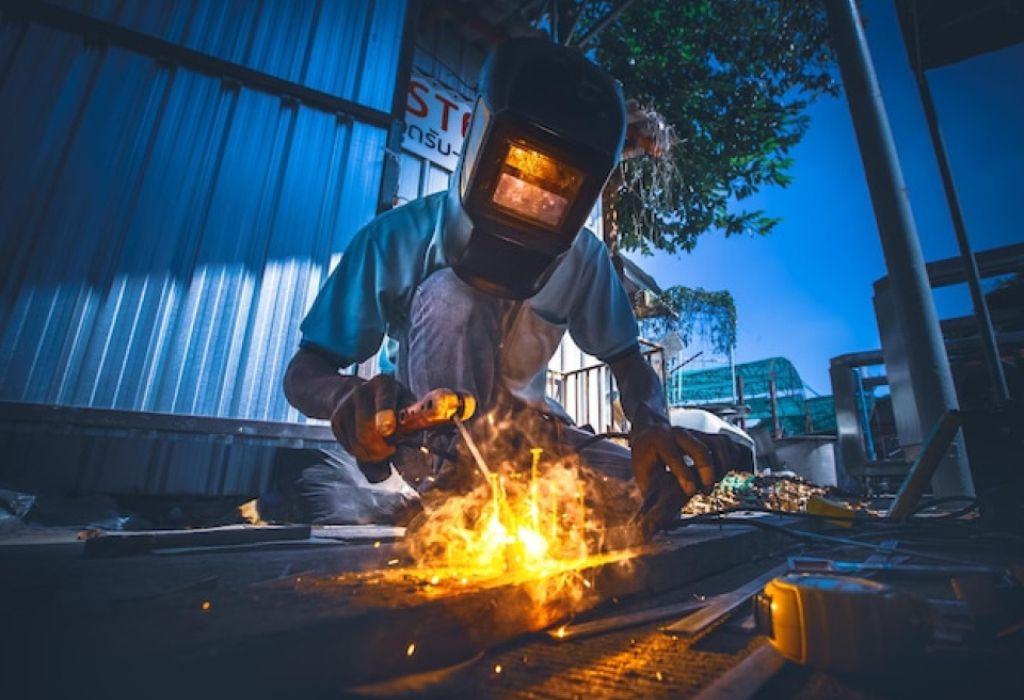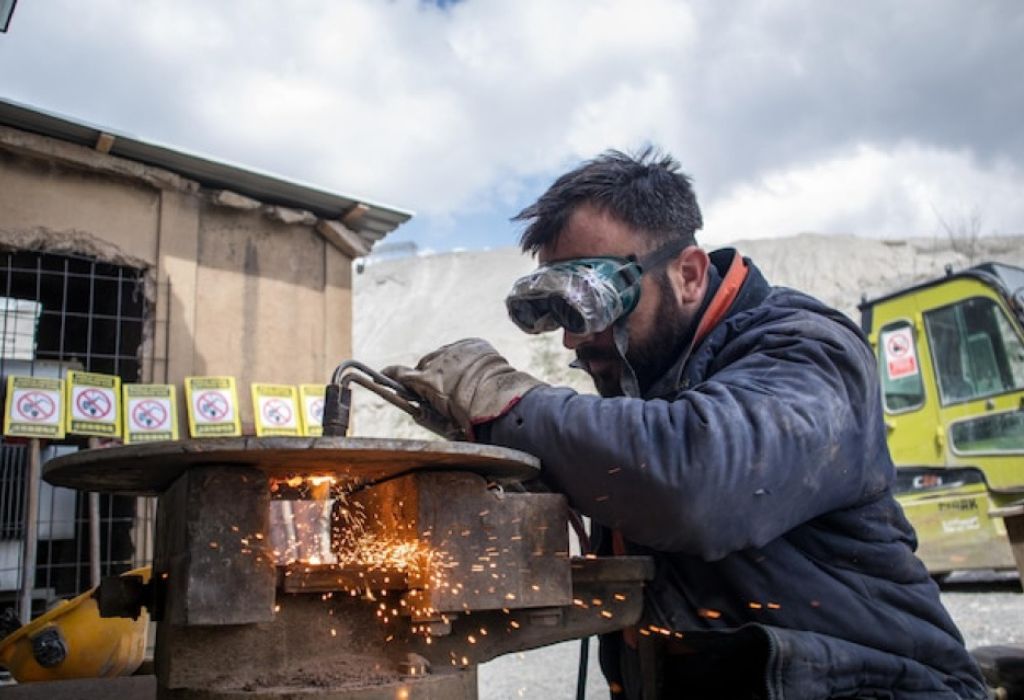Picture a construction site where sparks fly, and steel beams are fused into the framework of a new building.
The skilled professionals behind this work are welders, and many of them are certified to prove their ability.
Certification is more than a piece of paper—it is proof of competence and safety in high-stakes environments.
The welding industry continues to grow, with the U.S. Bureau of Labor Statistics projecting over 42,000 annual welding job openings due to growth and replacements (source: BLS).
Employers rely on certification to ensure welders meet established codes and standards.
For aspiring welders, the big question is: how long does it take to be a certified welder? The answer depends on training paths, certification types, and individual skill levels.
Some may achieve it in a matter of months, while others take longer depending on their specialization.
Understanding the certification timeline is key for anyone planning a welding career. In this guide, we’ll break down the process, training options, certification tests, and real-world factors that affect how long it takes to become certified.
What Does It Mean to Be a Certified Welder?

Certification verifies that a welder can meet industry codes and produce work that passes inspection. It provides credibility and helps secure employment in competitive industries.
It typically involves performance testing on materials like steel or pipe, followed by inspection methods such as x-ray or bend testing. Certification ensures welders can handle the demands of critical projects.
Many industries—including construction, shipbuilding, aerospace, and energy—require welders with certifications. This prevents safety risks and ensures high-quality welding performance.
Different certifying bodies exist worldwide, but in the U.S., the American Welding Society (AWS) remains the most recognized authority.
How do you become a certified welder?
You must pass a hands-on welding test at an accredited facility under AWS or similar organizations.
Who provides certification in the U.S.?
The American Welding Society (AWS) is the primary certifying body.
Is certification required for every job?
No, but most employers in industrial sectors require certified welders.
What skills are tested in certification?
Accuracy, consistency, code compliance, and safety standards are evaluated.
Does certification last forever?
No, AWS certifications require renewal every six months with employer verification.
How Long Does Welding Training Take?
Training duration is one of the biggest factors in how long it takes to be certified. Some welders enter the field quickly through short programs, while others invest more time in advanced training.
Certificate programs at trade schools or community colleges can last 6 to 9 months. These cover the fundamentals of welding and prepare students for entry-level certification tests.
Associate degree programs typically take 2 years, offering more extensive coursework in welding technology, metallurgy, and blueprint reading. These programs provide broader career options.
Apprenticeships, often lasting 3 to 4 years, combine classroom instruction with paid hands-on training. They are common in union and industrial pathways.
How fast can you become a welder?
With an intensive program, it’s possible to get certified in as little as 6–9 months.
Do you need a degree to be certified?
No, certification can be earned through short-term training programs.
Are apprenticeships required for certification?
No, but they provide real-world skills and often lead to higher pay.
Is hands-on training necessary?
Yes, certification tests require practical welding ability, not just theory.
Does longer training mean higher pay?
Generally, yes—advanced training can lead to specialized, better-paying roles.
The Welding Certification Process
The certification process focuses on proving technical ability under real test conditions. Candidates must demonstrate skill in specific welding methods, such as MIG, TIG, Stick, or Flux-Cored Arc Welding.
Tests involve welding plates or pipes in certain positions—flat, horizontal, vertical, or overhead. Each position adds difficulty and demonstrates more advanced skill.
Completed welds are evaluated by inspectors who check for strength, consistency, and compliance with codes. Testing methods may include visual inspection, bend tests, or radiographic testing.
Certification is granted only if the weld passes strict criteria, proving the welder’s readiness for industrial work.
How long does the test take?
The AWS welding performance test usually takes 1–2 days, depending on the method.
What if you fail the test?
You can retake it, though additional training may be required.
Do certifications differ by welding type?
Yes, each process (MIG, TIG, Stick) has its own test.
Who oversees the exam?
Tests are conducted at AWS Accredited Test Facilities (ATFs) or approved schools.
Can you get multiple certifications?
Yes, many welders earn multiple process certifications to expand job options.
How Long Does It Take to Be a Certified Welder?
The total time depends on the chosen path. Some welders achieve certification in less than a year, while others take several years to reach advanced levels.
Short-term training followed by testing can make you a certified welder in 6 to 12 months. This is common for entry-level jobs in construction or manufacturing.
Apprenticeships and advanced programs stretch the timeline to 2–4 years, especially for specialized welding like underwater or aerospace.
On average, most new welders become certified within 1–2 years, balancing training and test preparation.
Can you be certified in 6 months?
Yes, with intensive training and focused preparation, certification is possible in 6 months.
What is the average time for certification?
Most welders take 1–2 years to become certified.
Do advanced certifications take longer?
Yes, pipe welding, aerospace, and underwater welding require additional years.
Does prior experience shorten the time?
Yes, prior hands-on welding skills can reduce the training period.
Can you work while training?
Yes, many welders gain experience through apprenticeships or entry-level jobs while pursuing certification.
Factors That Affect Certification Time

Not every welder follows the same timeline. Several factors influence how quickly certification can be achieved.
Your starting point matters. Beginners with no prior welding experience may need longer training than those with shop or trade exposure.
Program choice is another factor. Short courses offer quick entry, while advanced degrees and apprenticeships extend the timeline but provide more career opportunities.
Finally, certification goals matter. A basic certification can be earned quickly, but specialized certifications take much longer.
Does welding type affect time?
Yes, TIG and pipe welding usually require more time than MIG or Stick.
Do schools vary in program length?
Yes, some offer accelerated 6-month courses, others provide 2-year degrees.
Does specialization matter?
Yes, advanced certifications in aerospace or underwater welding take years.
Do part-time students take longer?
Yes, part-time training often doubles the timeline compared to full-time.
Does location affect duration?
Yes, access to accredited facilities and apprenticeship programs varies by region.
Conclusion
So, how long does it take to be a certified welder? The answer depends on your chosen path, training program, and career goals. For some, certification can be earned in less than a year, while others may invest multiple years in advanced skills.
Certification proves your ability to meet industry standards, opening doors to secure and well-paying jobs. With strong demand for skilled welders, the time invested in certification pays off with steady opportunities.
If you’re ready to pursue welding, choose a training path that matches your career goals, prepare for certification tests, and start building a future in one of the most vital trades today.

I’m Darrell Julian, the founder, lead writer, and hands-on welding enthusiast behind ArcWeldingPro.com. With more than 15 years of real-world welding experience, I created this platform to share what I’ve learned in the field, in the shop, and in the heat of the arc.


